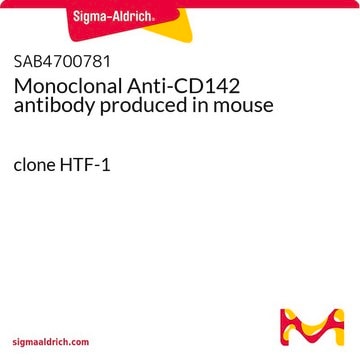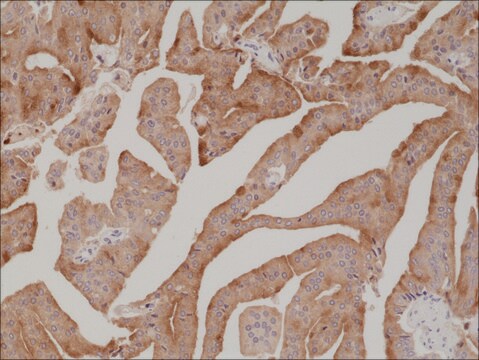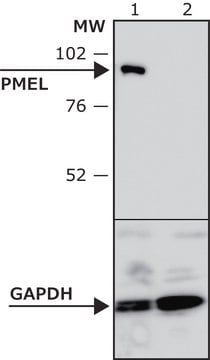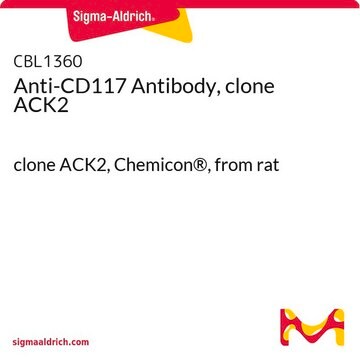SAB4200842
Anti-PMEL antibody, Mouse monoclonal
clone PL-19, purified from hybridoma cell culture
About This Item
Produits recommandés
Forme d'anticorps
purified from hybridoma cell culture
Niveau de qualité
Type de produit anticorps
primary antibodies
Clone
PL-19
Forme
liquid
Espèces réactives
human
Concentration
~1 mg/mL
Technique(s)
immunoblotting: 1-2 μg/mL using human melanoma SK-MEL-28 cell lysate
immunofluorescence: 1-2 μg/mL using human melanoma SK-MEL-28 cells
Isotype
IgG1
Numéro d'accès UniProt
Conditions d'expédition
dry ice
Température de stockage
−20°C
Modification post-traductionnelle de la cible
unmodified
Informations sur le gène
human ... PMEL(6490)
Description générale
Spécificité
Application
Actions biochimiques/physiologiques
In addition, PMEL fibrils have an amyloidogenic nature sharing features with pathological amyloids.4 Thus, PMEL is suggested as an excellent model system to study mechanisms of intracellular amyloid formation.1
Mutations in PMEL are associated with pigmentation disorders and/or impairments in eye development in various species.1,5,6
Forme physique
Stockage et stabilité
Clause de non-responsabilité
Vous ne trouvez pas le bon produit ?
Essayez notre Outil de sélection de produits.
Code de la classe de stockage
10 - Combustible liquids
Classe de danger pour l'eau (WGK)
WGK 1
Point d'éclair (°F)
Not applicable
Point d'éclair (°C)
Not applicable
Certificats d'analyse (COA)
Recherchez un Certificats d'analyse (COA) en saisissant le numéro de lot du produit. Les numéros de lot figurent sur l'étiquette du produit après les mots "Lot" ou "Batch".
Déjà en possession de ce produit ?
Retrouvez la documentation relative aux produits que vous avez récemment achetés dans la Bibliothèque de documents.
Notre équipe de scientifiques dispose d'une expérience dans tous les secteurs de la recherche, notamment en sciences de la vie, science des matériaux, synthèse chimique, chromatographie, analyse et dans de nombreux autres domaines..
Contacter notre Service technique








